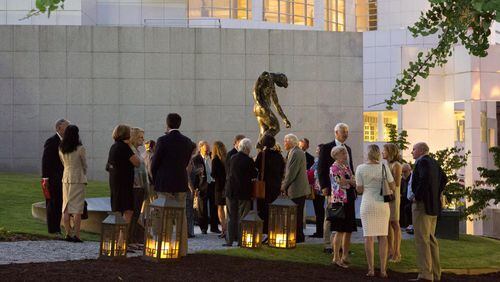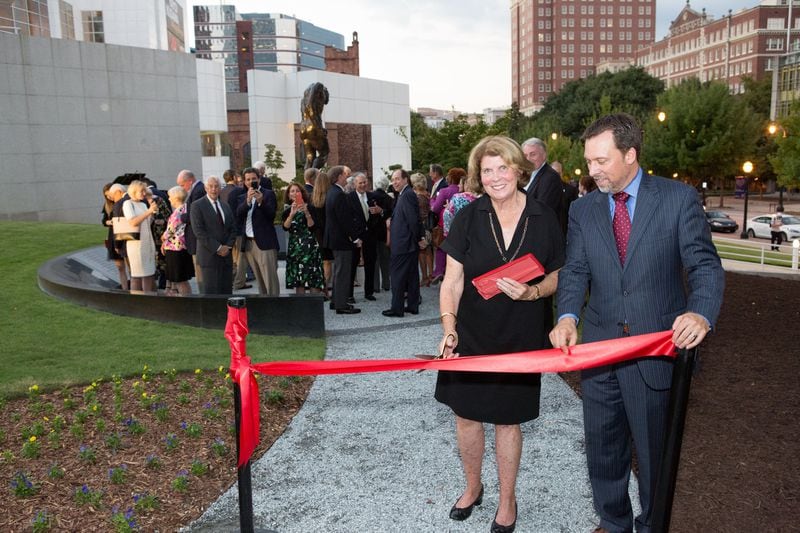Growing up in Newnan, Ga., Mary Mann wanted to go to faraway places, but the farthest away place her parents let her go was to Agnes Scott College, 40 miles away in Decatur.
“She waited a long time to go to Europe,” said her daughter, Ann Rhea. Mary Mann Boon finally made that trip in 1962 when she was already a grandmother twice over, traveling to Europe for a three-week trip with her husband, Dr. Harry Boon.
They accompanied members of the Atlanta Art Association to view the “treasures of Europe.” More than 100 Atlanta movers and shakers were on that trip, which was one part pleasure, one part business. Their hope was to bring some of that European culture back to Atlanta, a city that was still fairly provincial.
None of them made it back to Georgia. Their plane, a Boeing 707, crashed on takeoff from Orly Field, outside Paris, killing all 122 passengers and eight of the 10 members of the crew.
>> RELATED: Sadness, legacy of Orly crash remembered
Rhea was a 32-year-old mother of two when it happened. She woke suddenly at 6:30 a.m. on the morning of that day, June 3, 1962, after a clear dream about her parents.
At the time, it was the worst disaster in air traffic history.
As AJC reporter Rosalind Bentley wrote in 2012, "Entire families were lost, and a class of orphans instantly sprung up in the mansions of Buckhead, Ansley Park, Collier Hills and beyond."
Some of those orphans, including Rhea, gathered at the Woodruff Memorial Arts Center this month to remember Orly, and to acknowledge the momentous change that came about as a result of that tragedy.
Spurred by a $4 million gift from Robert Woodruff, president of the Coca-Cola Co., Atlantans launched an effort to create what those lost at Orly were hoping for: a culturally vibrant city, alive with theater, music and art.
In 1968, after years of effort, the Atlanta Memorial Arts Center opened its doors. The expected cost had ballooned from $6 million to $13 million (Woodruff covered almost half). The French ambassador to the United States, Charles Lucet, attended the opening, to present to the city of Atlanta a bronze casting of a Rodin statue, L’Ombre (“The Shade”), in memory of Orly.
On Oct. 19, 1968, the Atlanta Symphony Orchestra performed for the first time in its new Symphony Hall. It was a big improvement on the ASO's previous venue, the Municipal Auditorium, which also hosted wrestling and circuses.
>> RELATED: ASO's artistic executive to step down in December
The Rodin stood for years in the middle of the lawn in front of the center, which made it seem unapproachable. This month, the center built a path to what one staffer calls the most significant and valuable art object on the campus. During their recent gathering, Rhea and her colleagues walked along that path and raised a glass to the Rodin, and the success of the Woodruff.
“I think good things happened,” she said. “It led to good.”
Lately the Woodruff, the third-biggest arts center in the country, seems to be going from strength to strength. The Alliance Theatre will open the doors to its newly renovated facility this season, part of a $100 million "transformation" campaign that has also provided many more free events at the center.
The Atlanta Symphony Orchestra capped last season with a remarkable collaboration with the Alliance Theatre in a production of the Leonard Bernstein musical "Candide."
That collaboration is an emblem of the synergy between the arts that is part of the best of the Woodruff, said President and CEO Doug Shipman. That multiplier effect includes having dancers from the influential troupe Glo ATL performing on Symphony Hall stage, and ASO performances that include installations from artists with shows at the High Museum.
>> RELATED: High Museum's reinstallation reveals new works, rethinks old
Another accomplishment of the Woodruff is visible from the patio outside Octane, the coffee shop on the Woodruff campus. As Shipman sits in the October sunlight, discussing the Woodruff’s future, children run through the Sifly Piazza, their parents strolling close behind, among Yuri Suzuki’s colorful “Sonic Playground” and the eye-fooling “House III” sculpture by Roy Lichtenstein.
The piazza has become a regular feature on Instagram, a gathering place instead of a pass-through, said Shipman. That is part of the Woodruff’s mission: to make the campus open and accessible, a place where people want to be. The arts leaders who died in 1962 wanted a city that embraced music, theater, the visual arts. They got that, and they got an arts center that embraced the city right back.
“This is a living symbol of the dreams of the folks that we lost,” said Shipman. “It’s important to remember that those dreams did come to life.”
About the Author








